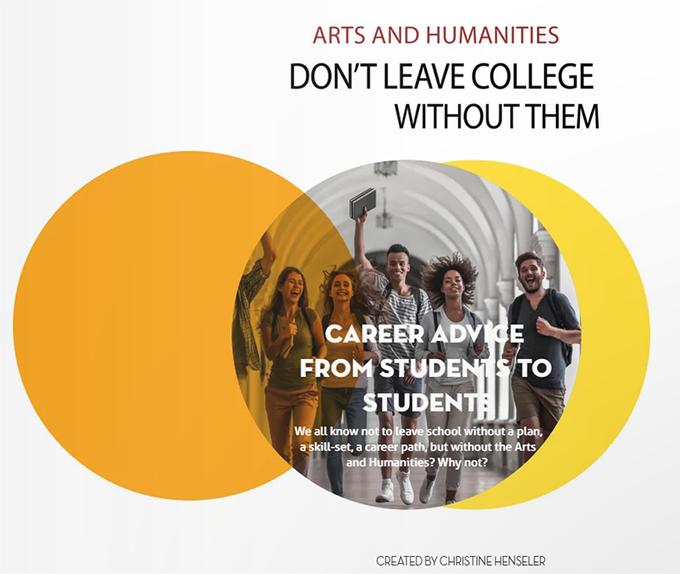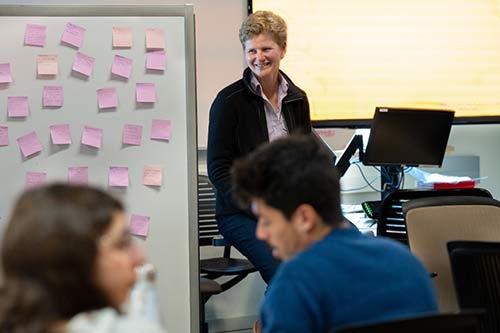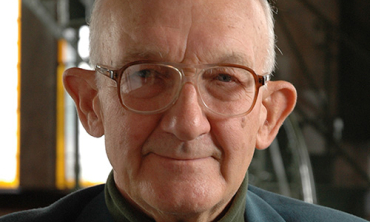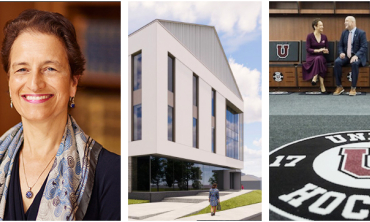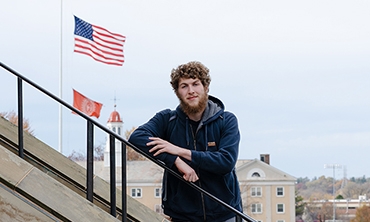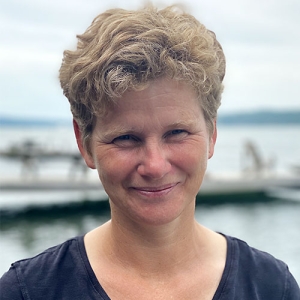On the first day of an interdisciplinary Sophomore Research Seminar, “Why the Arts and Humanities?” Christine Henseler asked her students to describe the humanities. Students seemed generally confused about their understanding of this abstract term.
The next day, she asked them to share the stigmas associated with the arts and humanities. She then had them list the careers someone can pursue with a degree in English.
“Students were stunned to see how they undermined the stigmas they had just written down,” said Henseler, a professor of Spanish. “I remember one English major, a young novelist, sitting back in her seat after this activity. She was smiling. ‘I finally know what to say to my parents about getting a job with a degree in English.’”
That simple exercise five years ago helped inspire Henseler to create a new guidebook, “Arts and Humanities: Don’t Leave College Without Them.” The 350-page e-book is aimed at helping high school and college students think about the role that the arts and humanities can play in their lives and careers.
Completed earlier this year, the flipbook includes essays by students, alumni and young professionals, portraits of young innovators, information about majors, success stories, interviews and more.
The project is particularly relevant this month, which President Joseph R. Biden has declared National Arts and Humanities Month.
“We take inspiration from the contributions of artists, historians, authors, entertainers, designers, philosophers, curators, scholars, filmmakers, archivists, librarians, administrators and others who make up our creative sector and document and preserve our history,” the executive order reads. “Their efforts help lift up new voices and shine a light on previously untold stories. Artists and thinkers enrich our experiences by encouraging us to live artful lives, find and create pathways to connection and empathy, improve our well-being, and create and maintain the balance and beauty of the world around us.”
Organized by chapters, Henseler’s guidebook deftly articulates “how the arts and humanities can play a foundational and transformational role in your lives and careers, whether you are thinking about going into the art world, business, medicine, engineering, environmental science or any other profession,” she writes in the introduction.
Chapter titles include “Become a Global Thinker,” “Beat Out the Competition, Double Major” and “But, Can I Make A Living?”
Henseler thought an e-book format, packed with colorful photos and graphics, would appeal to younger people. A link and a QR code also enable her to reach more people than a traditional book.
The guidebook is primarily written by students and for students, Henseler said, because research shows that peer-to-peer communication is more effective than messages or articles from faculty and administrators.
“Although I edited every essay, I made sure to keep their voices intact because authenticity matters,” Henseler said. “Length also matters. Students prefer shorter readings, which is why you will find very few longer essays. And my voice is limited to answering questions or adding perspectives that I found to be at the forefront of students’ minds and not directly addressed in their essays.”
Henseler’s daughter, Leah, an accomplished sculptor and designer who is a sophomore with a double major in studio art and marine affairs at the University of Miami, contributed an essay, “Who Needs Art?”
Nate Boule ’23, a biomedical engineering major from Plattsburgh, N.Y., wrote an essay on the impact of taking a humanities class.
“I’m not sure who I would be if I wasn’t required to take a course in humanities,” he wrote. “I could assume that I would be the same high school student who thought they had everything in their life and that their future would work out exactly the way I imagined. Humanities were the key that unlocked me from being trapped in this constant cycle of thought. They have provided me with valuable skills that I would not have developed otherwise.”
The guidebook is the latest project championing the liberal arts for Henseler, who joined Union in 2001. Others have included “Extraordinary Partnerships: How the Arts and Humanities are Transforming America,” “We Need More Men in the Humanities” and a forthcoming volume on “The Entrepreneurial Humanities.”
Henseler worked primarily on the guidebook in the evenings, on weekends and during vacations. Union provided some financial support, which allowed her to hire an editor, designer and work-study students.
One driving force of the guidebook, Henseler said, is based on the disconnect between what people think about the role of arts and humanties, and what is happening on the ground.
“I am floored by how many exciting examples I can find of young artists in the humanities. There are entrepreneurs and change makers working in environmental science creating underwater sculpture parks, and working in circuses building programs for disabled individuals, or they are creating installation art and making millions of dollars while transforming the culture industry of various communities.
“We are at the forefront of sustainable design and environmental justice, of global cultural diversity efforts, of ethical thinking in the business world. Why aren’t our students seeing that the arts and humanities are at the forefront? This is why I created this guidebook: to expand how students think about the role of the arts and humanities in their education and professional pursuits.”
